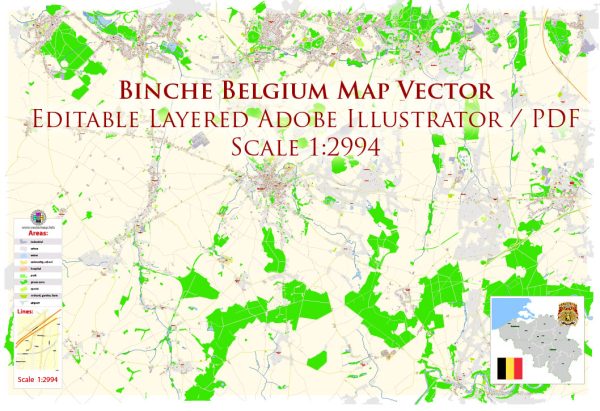Binche is a historic city located in the Hainaut province of Belgium. Its history of urban development is rich and diverse, spanning many centuries. Here is a brief description of the history of urban development in Binche:
- Medieval Origins: Binche’s history can be traced back to the medieval period, with its first recorded mention dating to the 12th century. It was a fortified town during this time, strategically situated along trade routes and protected by walls and fortifications.
- Growth and Prosperity: Binche experienced periods of growth and prosperity in the late Middle Ages, thanks in part to its location and the presence of a thriving textile industry. This economic development contributed to the city’s expansion and the construction of various religious and civic buildings.
- Renaissance and Habsburg Rule: During the Renaissance, Binche was under the rule of the Habsburg family, who made significant contributions to the city’s architecture. The Binche Belfry, a UNESCO World Heritage Site, was constructed during this period and is a symbol of the city.
- Spanish Netherlands: In the 16th and 17th centuries, Binche was part of the Spanish Netherlands, and the city saw further development and urbanization. It continued to be a prominent center for textile production and trade.
- French Rule: Binche came under French control during the French Revolutionary and Napoleonic eras. The city’s fortifications were partially dismantled during this time, leading to a change in the urban landscape.
- Belgian Independence: After the Belgian Revolution of 1830, Binche became part of the newly established Kingdom of Belgium. The city’s urban development continued to evolve as it adapted to the changing political and economic landscape.
- Modernization and Industrialization: The 19th and early 20th centuries brought significant industrialization to Binche, with the growth of coal mining and heavy industry in the region. This led to the expansion of the city and the construction of housing for the growing population.
- Preservation and Tourism: In the latter half of the 20th century, Binche took steps to preserve its historic heritage. The city’s medieval and Renaissance architecture, along with its renowned Carnival of Binche, attracts tourists and cultural enthusiasts from around the world.
Binche’s urban development is characterized by a blend of medieval, Renaissance, and more modern architectural elements. The city’s historical sites, including its belfry, town hall, and various churches, are testament to its rich heritage. Today, Binche continues to be a vibrant city that balances its historical charm with modern amenities, making it an intriguing destination for visitors interested in the history and culture of Belgium.


 Author: Kirill Shrayber, Ph.D.
Author: Kirill Shrayber, Ph.D.